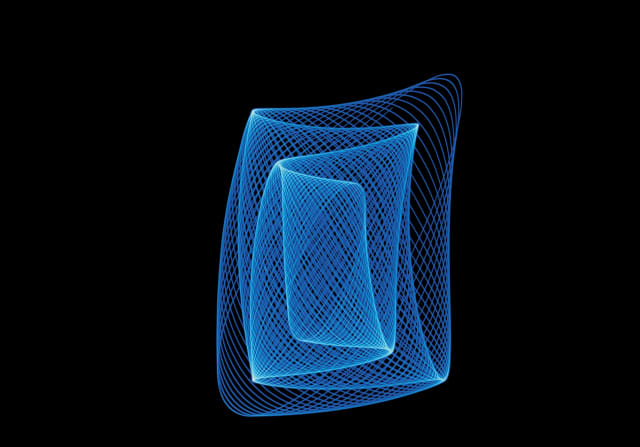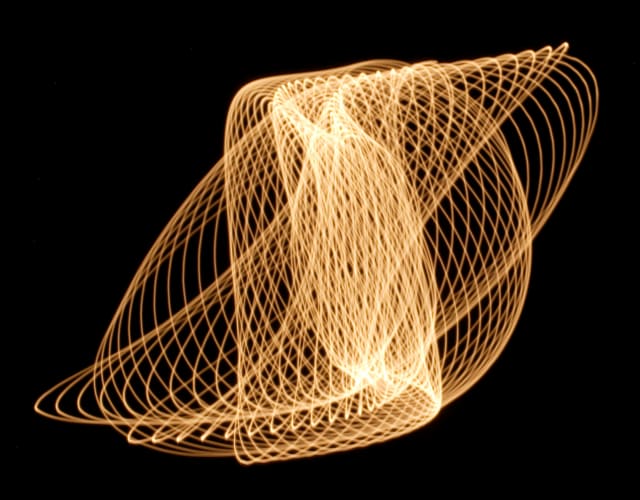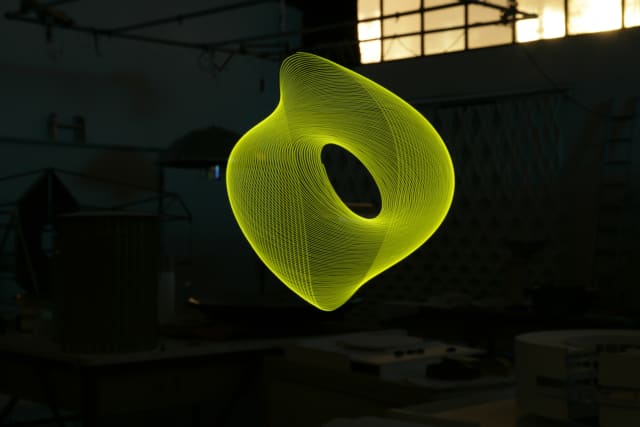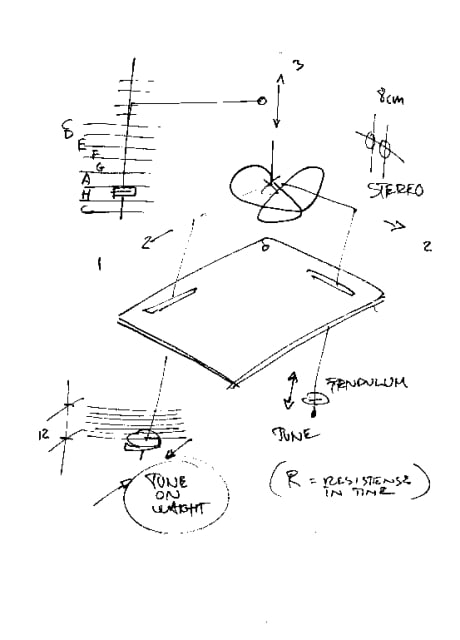This work is based on The endless study, 2005, a version of a 19th-century harmonograph that was realised by Studio Olafur Eliasson as part of an investigation into the correlation between space and sound. Two lateral pendulums, mounted at right angles to one another, are set in motion, their ends connected by a hinged arm. At the connection point, a pen is affixed. An adjustable weight is secured to each pendulum, thus enabling the speed of the movement to be altered. Mounted on gimbals, a third pendulum, with a small wooden platform at its top, makes a rotary movement. A sheet of paper is attached to the platform; the pen records the resultant rhythms of the circular movements onto this horizontal plane.
For The endless study in three dimensions, the swinging pendulums are measured individually in order to retrieve a 3 dimensional representation of the geometry. By assuming that the connecting point of the three pendulums is moving along a straight line and that there is a linear relationship between movement and time, the angles of each pendulum are measured with a rotary transducer. The data is registered in an oscilloscope and later analysed and visualised in a CAD program by plotting the data along the x,y and z axis.



